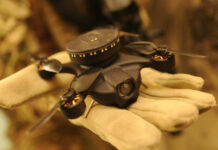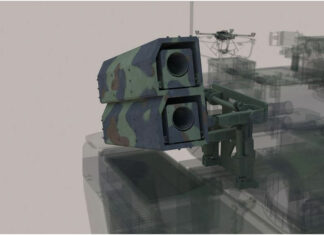As Future Infantry programs are becoming popular with many armies, developers are becoming aware of the costs, over expectations and shortfalls of initial plans. Programs are currently underway with many armies, including almost all NATO members, as well as Singapore, Australia, and Israel, to name only a few. Some programs are more advanced than others. Germany and France are considered the most mature; the German IDZ program is partly fielded already while the French Felin is expected to follow in 2007.
One of the biggest gaps encountered in current programs is the gap between vision and reality – the pace of technology development exceeds the warfighter’s human capability. Due to lack of experience, junior commanders, those who will benefit the most from such system, find it difficult to grasp the new potential opened by such system of systems. Furthermore, existing communications gaps, particularly concerning data and video transfer between individual systems, limits their usability at a larger scale.
Most armies consider their future infantry program as pilot experiments, to be followed by future acquisitions of more mature systems. Some opt to test the systems with standard suits for every warrior; others prefer tailor made systems provided for every warrior, team leader or commander. Others limit the use of such systems by commanders only. Yet, the common denominator of all experiments is the lack of experience with system of systems i.e. unit level formations (platoon, company level), which leave most of the debate to theoretical discussions.
ITL’s Infantry Combat Suits Ready for Operation
Based on 30 years of experience in development of advanced electronic and optronic equipment for dismounted infantry, Israel’s ITL Optronics Company is offering a complete line of infantry combat suits, ready for deployment. In recent months, ITL sold several systems to armies in Europe, Middle East and Africa (EMEA), with more systems sent for evaluations by a number of armies in Europe. According to Col. (res) Alon Eshkol, director, advanced infantry warfare systems at ITL, the company is now preparing the first integrated system to equip a full company and infantry platoon. “These mature systems are available for operational deployment. For special operations units, where new technologies are introduced more effectively, our systems can be integrated and deployed immediately”.
Yet, according to Eshkol, deploying infantry combat suits with regular or even elite infantry units is more of a challenge. “Loading the soldier with non relevant information is just as bad as carrying excessive weight.” He explains, it is important to provide every user at every level with the suitable set of information to support their tasks. “Such systems can mature from operational experience, after extensive testing, evaluation and training with the units. Such systems cannot be imposed on the soldiers”. Eshkol hopes that the flexible systems offered by ITL could be used to define future requirements and concepts of operations (CONOPS), and help define procurement plans based on actual field experience. “Such company level exercises will provide a real-life ‘play ground’ where users can employ the system during routine operations, training and combat operations, assess new concepts of operation, providing a ‘safe path’ toward the maturation of larger scale programs in the future.
ITL’s plan to accommodate the full set of capabilities in every system, including rifle mounted sight and pointing system, wearable computer fitted into a load bearing vest, integrated with navigation system and communications, helmet mounted viewer, target acquisition binocular, and a wearable computer. This computer is configured in two modules, a Central Processing Unit (CPU) and communications controller. The CPU performs data and graphics handling, and runs the C2 applications. The computer drives various display systems; including helmet mounted display, hand held PDA size display. According to Eshkol, the generic system offers the maximum set of capabilities, and can be programmed to reduce the functionality of specific systems to the requirements of the individual user, according to their position, tasks and skill level. The system is operated as an open system, providing for future integration of additional assets such as external sensors (for example robotics, UAVs etc.)
The system accommodates sophisticated weapons’ sights, such as the TOP-MARS, integrating a reflex sight, infrared and visible target markers, the VIPER an integrated weapon based fire control system, command and control system, which can run on laptop computers and ITL’s new wearable computer, to support battle planning, tactical movement, target acquisition, task allocation, situational awareness, and post mission debriefing. Hundreds of such units, controlled under computer based command and control systems are operational with the IDF, where they support border security and patrol missions. After evaluating several options and fielding an initial XP based system, ITL decided opted to use the power saving Windows CE to drive their computer, taking advantage of its efficiency and modest power consumption. “We realized that the weight penalty associated the Windows XP is unacceptable, when you measure every gram of extra weight” says Eshkol. Our CE based computer consumes only 8 watts, managing all sensors, controlling graphics, displays, communications, and navigation supports the full scope of command and control services. According to Eshkol, the new CE based wearable computer will be ready for deployment within few months.
Tavor Enters into Operational Service
Infantry modernization is also reflected in the fielding of new assault weapons for elite and special operations units. In this field, Tavor, the new Israeli assault rifle is positioned to take the world market by storm. This new, lightweight and compact weapon rapidly becomes an ‘organic’ part of the warfighter. It has already been chosen to arm the Israeli (IDF), the first unit is expected to be equipped with the new weapon by August 2006. Indian elite and regular troops are also expected to use the weapon, which will be locally produced in India by the Indian Ordnance factory Board (OFB). Tavor was selected by the IDF in 2003, following an extensive competition against the M-4. The first shipments of hundreds of Tavors were already delivered to the IDF and production is continuing at high rate at IWI’s facility, to supply current orders.
India Adapts Tavor, Micro Tavor Designs
A different version, based on the Tavor system is the Micro Tavor, designed to address the needs of special operations forces and counter terrorist units. According to Mark Shachar, IWI marketing manager, with its compact dimensions Micro Tavor (MTAR 21) also makes a perfect match for drivers and tank crews. MTAR was developed in close cooperation with special operations units and is tailored to their specific requirements and needs. Based on its strategic cooperation with IAI, OFB is also offering a Micro Tavor derivative called Zittara, available in three versions – 5.56 assault rifle, 0.40 Cal carbine and 9mm submachine-gun.
MPRS Gears for IDF Service
The Multi-Purpose Rifle System (MPRS) weapon system, developed by IMI is expected to complete type classification by the IDF, prior for its service entry. MPRS will become a squad level weapon system, replacing M-203 40 mm grenades in some units. IMI is offering the system with the new ORION customized sight, designed to provide a ready to use, improved lethality system combining a standard assault rifle, such as Tavor, M4, SA80, INSAS, FAMAS or any other weapon using a standard Picatiny rail. The system utilizes advanced 40mm air-burst grenades and standard 5.56mm ammunition. MPRS uses the new ORION customized fire control and sighting system providing navigation, target acquisition, ranging, ballistic computation, ammunition interface as well as day and night capability in a single, compact 600 gr. system.



















